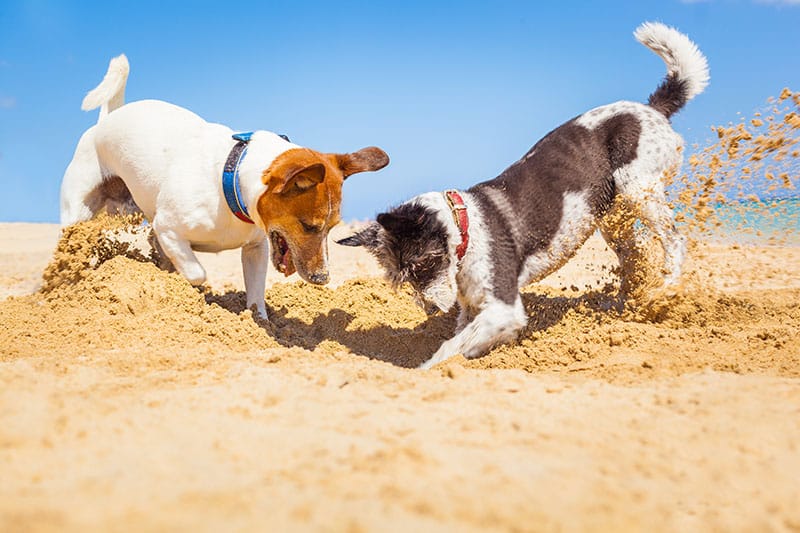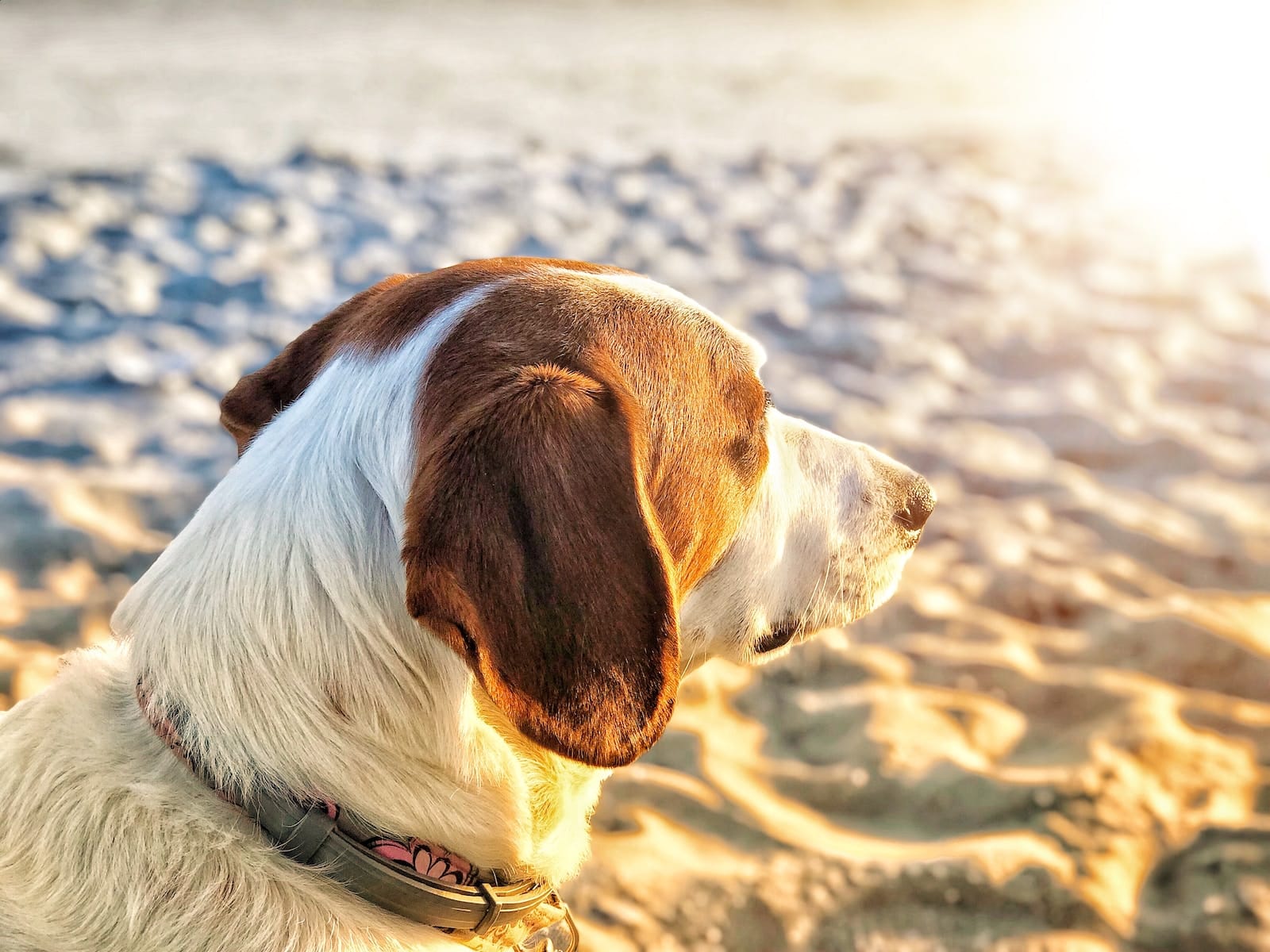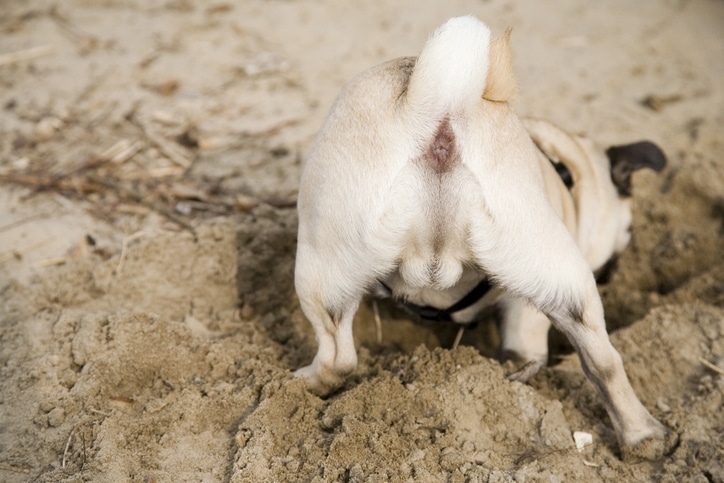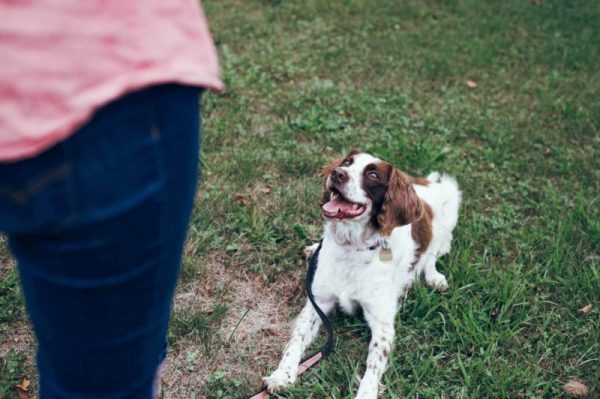A day at the beach can be fun and relaxing for dogs and their owners. If your dog is a digger, the endless stretch of sand might seem like paradise. However, it can be dangerous for your dog to burrow in the sand, and you’ll need to supervise them carefully if you allow it.
Keep reading to learn how burrowing in the sand can pose a threat to your dog and ways to prevent problems. Plus, you’ll find an important guide to keeping your dog safe at the beach.

The 3 Troubles with Burrowing in Sand
1. Cuts or Wounds
As your dog digs in the sand, they could encounter sharp or rough items that could cause cuts or other injuries. Fish hooks, shells, glass, and other trash can all wind up buried on the beach. Cuts from these items can be painful and put your dog at risk of infection.
If your dog receives a cut from burrowing in the sand, you may notice blood in the area or your pup limping. To protect your dog, check the sand where they try to dig or distract them from the activity.

2. Sand Impaction
One of the biggest dangers at the beach is your dog eating sand. Digging in the sand can be one of the most common ways dogs swallow sand. If your dog ingests too much sand, it can become stuck in their intestines, causing a condition called sand impaction.
Signs of sand impaction include belly pain and distention, vomiting, constipation, and a loss of appetite. Monitor your dog carefully if they dig to ensure they aren’t eating sand or distract them from their burrowing.
3. Eye Injuries
If your dog burrows in the sand, they risk getting the rough grains in their eyes and causing an injury. You can prevent this by fitting your dog with protective goggles or discouraging them from digging.
Possible signs of eye injuries include squinting, colored drainage, excessive tearing, and pawing at the face.
If you need to speak with a vet but can't get to one, head over to PangoVet. It's our online service where you can talk to a vet online and get the advice you need for your pet — all at an affordable price!

Beach Safety Guide for Dogs
Before heading out for a day at the beach, research the available amenities and rules at your chosen spot.
Here are a few tips to ensure your dog spends a safe day at the beach.
- Determine if the beach allows dogs and if they must be on a leash.
- Some beaches only allow dogs in specified areas, and it’s essential to determine where they are before visiting the beach.
- Pack everything you’ll need for your dog. Water, doggy bags, food, and even a pet first aid kit are essential supplies to have with you.
- You’ll need to locate a hose or outdoor shower to rinse the sand and saltwater off your dog at the end of the day.
- Take sun and heat protection seriously. Some dogs may need to wear dog-safe sunscreen on their noses, ears, and other exposed skin.
- Bring a tent or large umbrella to give your dog a cool place to rest and avoid being on the beach during the hottest parts of the day.
- Don’t let your dog drink salt water, which can cause toxicity in large enough quantities.


Conclusion
While some dogs can dig and burrow in the sand without problems, it’s a risky habit. Given the dangers, it’s usually best for your dog to stick to other beach activities instead.
You can follow our preparation tips and safety guide to ensure your day at the beach is fun and safe for you and your dog. If you suspect your dog has a sand impaction or any other issues we discussed in this article, contact your veterinarian.
Featured Image Credit: Ariane Lohmar/Getty Images

















